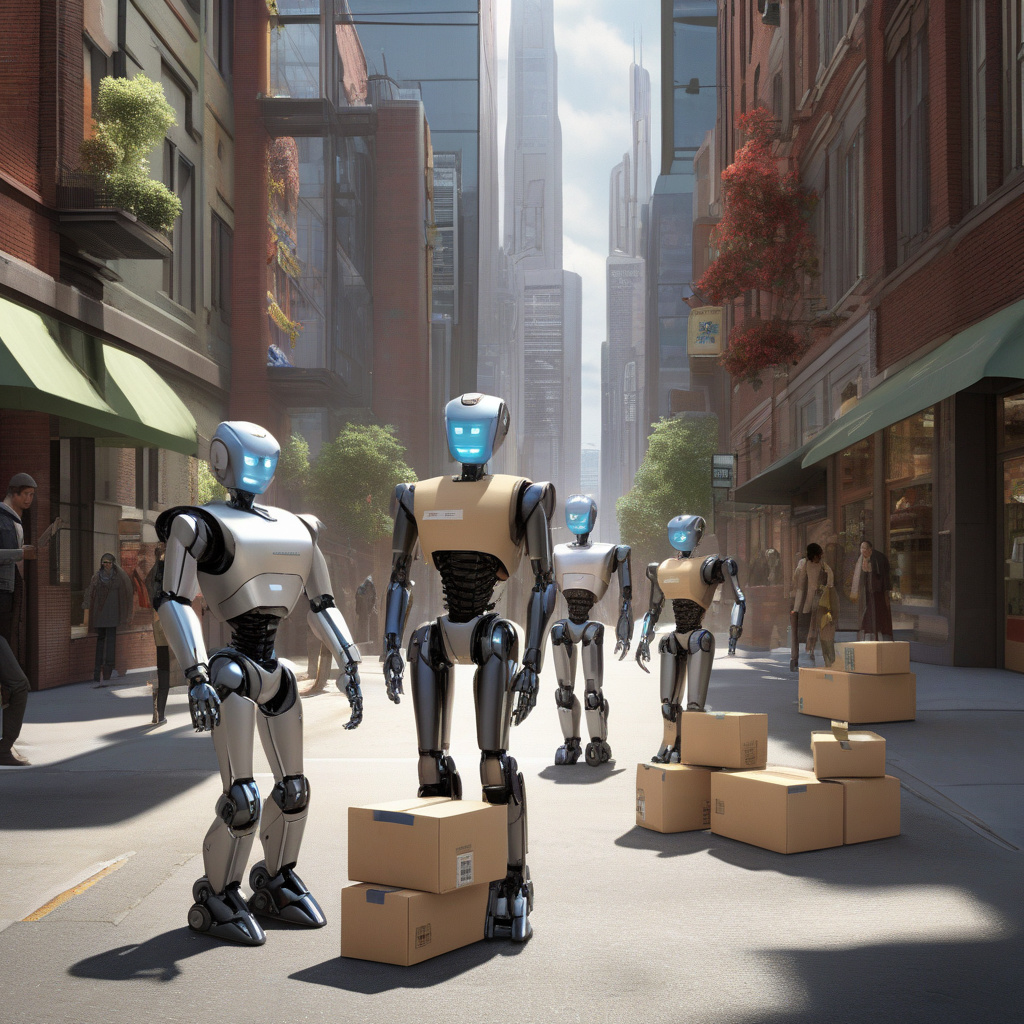Amazon Begins Testing Order Delivery Handled by Humanoid Robots
In a significant move that could redefine the landscape of retail logistics, Amazon has announced the commencement of testing for its humanoid robots designed for order delivery. This initiative underscores Amazon’s commitment to innovation and efficiency in its operations, aiming to streamline the last-mile delivery process that has long been a challenge for many retailers.
With the increase in online shopping, particularly accelerated by the pandemic, the demand for faster and more reliable delivery options has surged. Amazon has consistently sought ways to enhance its delivery capabilities, and the introduction of humanoid robots represents a natural progression in this quest for efficiency. The robots are expected to navigate complex environments, interacting with customers and delivering packages directly to their doors.
The testing phase is critical for Amazon as it seeks to iron out any potential issues before full-scale deployment. Initial reports suggest that these robots are equipped with advanced sensors and navigation systems, allowing them to move autonomously in various settings. This technology not only enhances their ability to deliver packages but also ensures safety as they navigate through pedestrian areas.
One of the key benefits of using humanoid robots for order delivery is the potential reduction in labor costs. Traditional delivery methods often rely on human labor, which can be costly and subject to various limitations such as availability and scheduling conflicts. By integrating humanoid robots into their logistics network, Amazon could significantly reduce these costs, allowing for more competitive pricing and potentially lower shipping fees for customers.
Moreover, these robots could help mitigate the growing issue of delivery delays, particularly during peak shopping seasons such as Black Friday or the holiday season. With their ability to operate around the clock without the need for breaks, humanoid robots can ensure that packages are delivered promptly, enhancing customer satisfaction. This ability to maintain efficiency even during high-demand periods could set Amazon apart from competitors who may struggle to keep up with the increased demand.
It is also worth noting that the introduction of humanoid robots aligns with broader trends in automation across various industries. Companies are increasingly leveraging technology to improve operational efficiency and reduce human error. For Amazon, the integration of robots into its delivery network is a logical step, considering its history of embracing innovation, from its use of drones to its investment in artificial intelligence.
However, the transition to a robotic delivery system is not without challenges. Public acceptance of humanoid robots in everyday life remains uncertain. While some consumers may welcome the convenience of robotic deliveries, others may be apprehensive about interacting with machines instead of human delivery personnel. Amazon will need to address these concerns effectively through marketing and community engagement to ensure a positive reception of its new delivery method.
Furthermore, the ethical implications of replacing human jobs with robots must also be considered. As automation becomes more prevalent, the potential for job displacement in the delivery sector raises important questions about the future workforce. Amazon has stated its commitment to retraining employees affected by automation, but the long-term impact on employment rates in the retail sector remains to be seen.
In conclusion, Amazon’s testing of humanoid robots for order delivery represents a bold step into the future of retail logistics. As the company navigates the complexities of this transition, it will be essential to monitor both customer reactions and operational outcomes. Should the testing phase prove successful, we may witness a significant shift in how packages are delivered, potentially setting new standards in the industry.
As Amazon continues to innovate, the retail landscape will undoubtedly be influenced by these advancements, paving the way for a new era of shopping convenience. Whether consumers will fully embrace this technological leap remains an open question, but one thing is clear: the future of delivery is on the horizon, and it may very well be humanoid.
retail, Amazon, robotics, delivery, innovation
